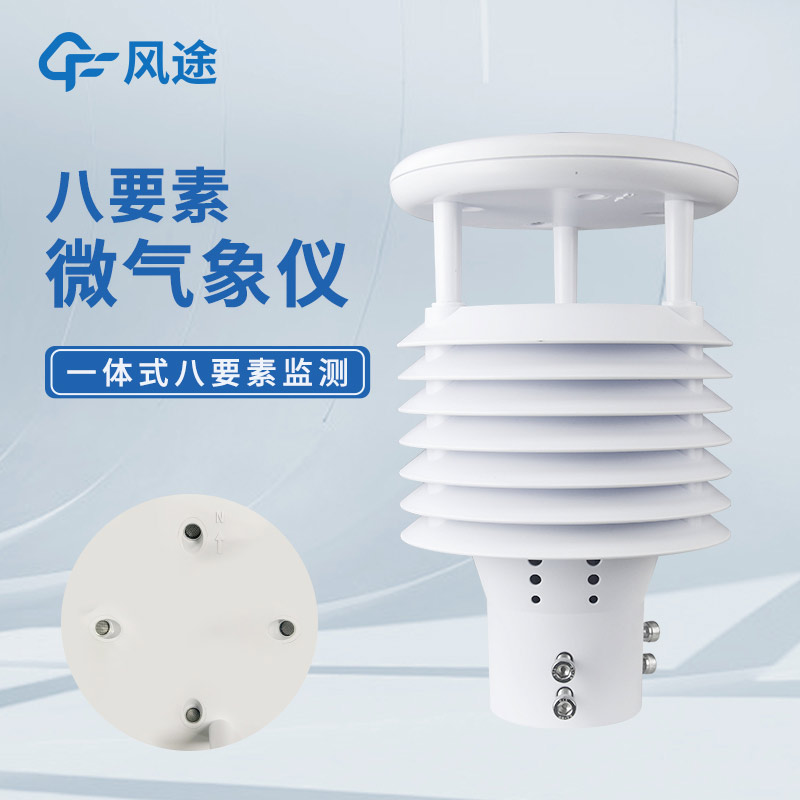Tianyi Sensor IOT Technology Co., Ltd
Sales Manager:Ms. Emily Wang
Cel,Whatsapp,Wechat:+86 15898932201
Email:info@fengtutec.com
Add:No. 155 Optoelectronic Industry Accelerator, Gaoxin District, Weifang, Shandong, China

Sales Manager:Ms. Emily Wang
Cel,Whatsapp,Wechat:+86 15898932201
Email:info@fengtutec.com
Add:No. 155 Optoelectronic Industry Accelerator, Gaoxin District, Weifang, Shandong, China
time:2025-07-21 08:48:26 source:Weather Station viewed:193 time
In terms of application value, the popularization of integrated dust monitoring sensors like the FT-WQX8 is transforming traditional environmental monitoring models. In the past, single-parameter monitoring devices required separate deployment and maintenance. Not only did this result in high initial equipment procurement costs, but the scattered nature of the devices also demanded more human and material resources in long-term operation and maintenance. Additionally, differences in data collection time and accuracy among different devices led to prominent issues of data asynchronization. However, by integrating multiple monitoring functions, this sensor can complete multi-parameter monitoring with a single device, reducing installation costs during deployment and later operation and maintenance costs. Meanwhile, since all parameters are collected synchronously, it makes the correlation analysis between dust pollution and meteorological conditions more convenient and the results more accurate.
In actual supervision, these real-time monitoring data can provide precise basis for environmental law enforcement. For example, if the PM10 concentration in a construction site exceeds the standard and the wind speed is low, combined with humidity data, if the air is dry, it can be judged that the site's sprinkling and dust suppression measures are insufficient; if the humidity is normal but the concentration in the area with fixed wind direction is relatively high, it may be that the unreasonable setting of enclosures causes dust spillage. Supervision departments can quickly identify the root cause of the problem based on this and promptly require rectification. The long-term accumulated monitoring data can also provide references for urban dust pollution control planning. By analyzing the correlation between dust concentration changes in different regions and seasons and meteorological factors, it helps identify high-pollution areas and periods. For instance, areas with concentrated construction sites are prone to dust peaks in spring with strong winds. Thus, more targeted control strategies can be formulated, such as increasing inspection frequency during key periods and requiring construction units to strengthen windproof and dust suppression measures, so as to reduce dust emissions from the source.
From the perspective of technical adaptability, the digital output characteristic of the sensor enables it to be easily connected to urban environmental monitoring platforms, realizing real-time data transmission and sharing. Different entities such as environmental protection departments, construction units, and scientific research institutions can obtain required data through the platform: environmental protection departments use it for supervision and law enforcement, construction units for self-inspection and rectification, and scientific research institutions can carry out research on the formation mechanism of dust pollution based on a large amount of data, promoting the upgrading and iteration of governance technologies, and forming a multi-party collaborative pattern for dust pollution control.

Negative oxygen ion monitoring stations function to real-time capture and transmit negative oxygen ion data in the air. Through "on-site display + remote viewing," they convert the originally invisible and intangible negative oxygen ion concentration into intuitive data, allowing managers...
To meet the needs of air pollution prevention and control, environmental protection authorities require more refined and efficient air quality supervision. However, traditional national standard monitoring stations, despite providing high data accuracy, face limitations such as high construction cos...
Meteorology and soil moisture are two fundamental elements in agriculture. Meteorology determines the "timing" of agriculture, while soil moisture reflects the "favorable geographical conditions". Together, they form the environmental framework for crop growth.The dynamic changes...
A meteorological observation station is a facility used to monitor and record meteorological information. It collects data on weather conditions through various instruments and equipment, providing important basis for weather forecasting, climate research and disaster warning.As a professional facil...